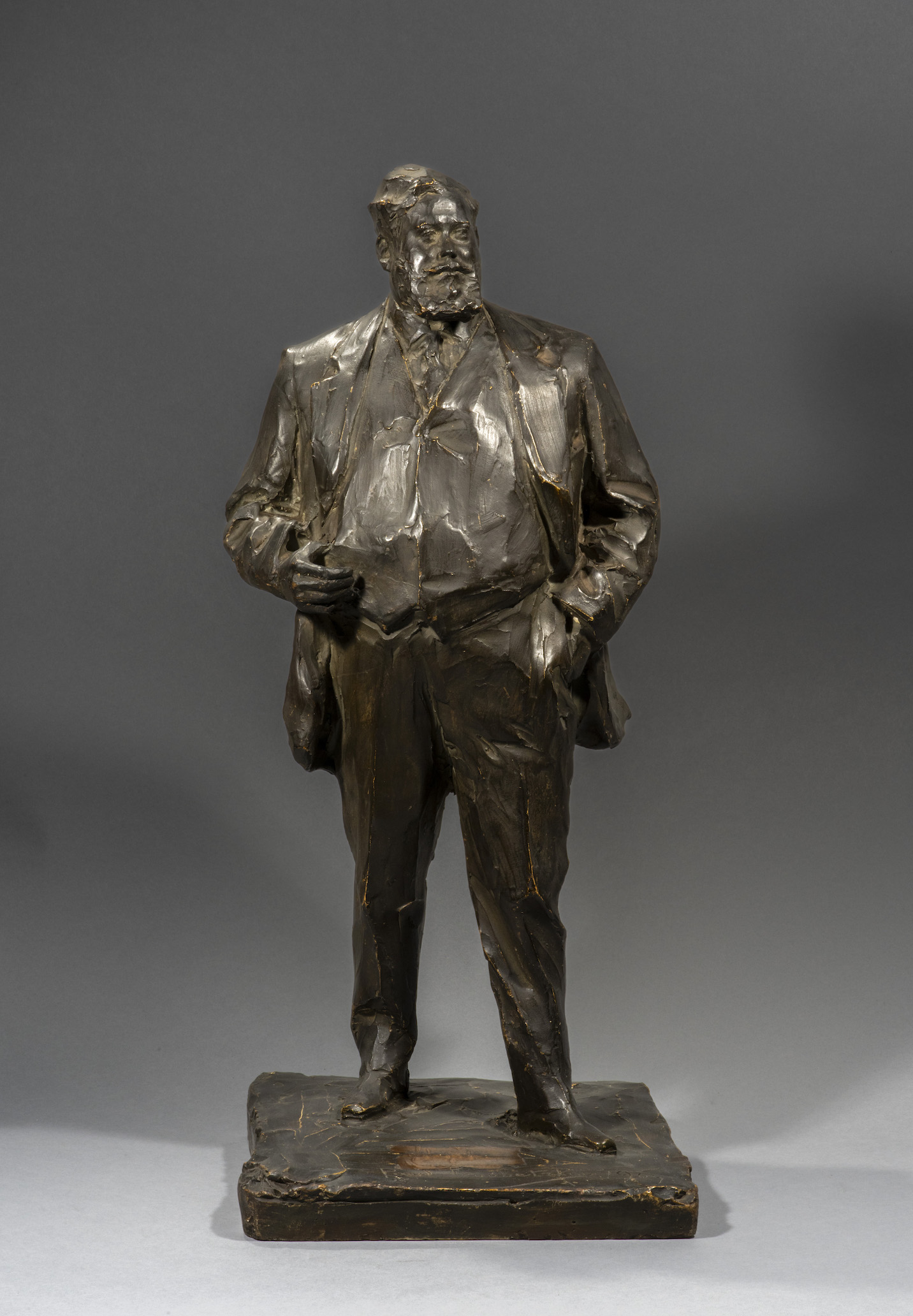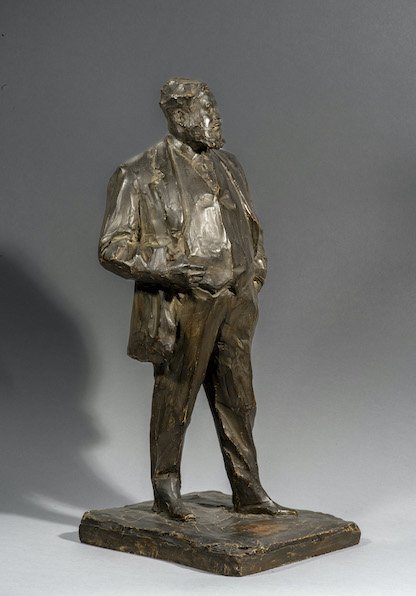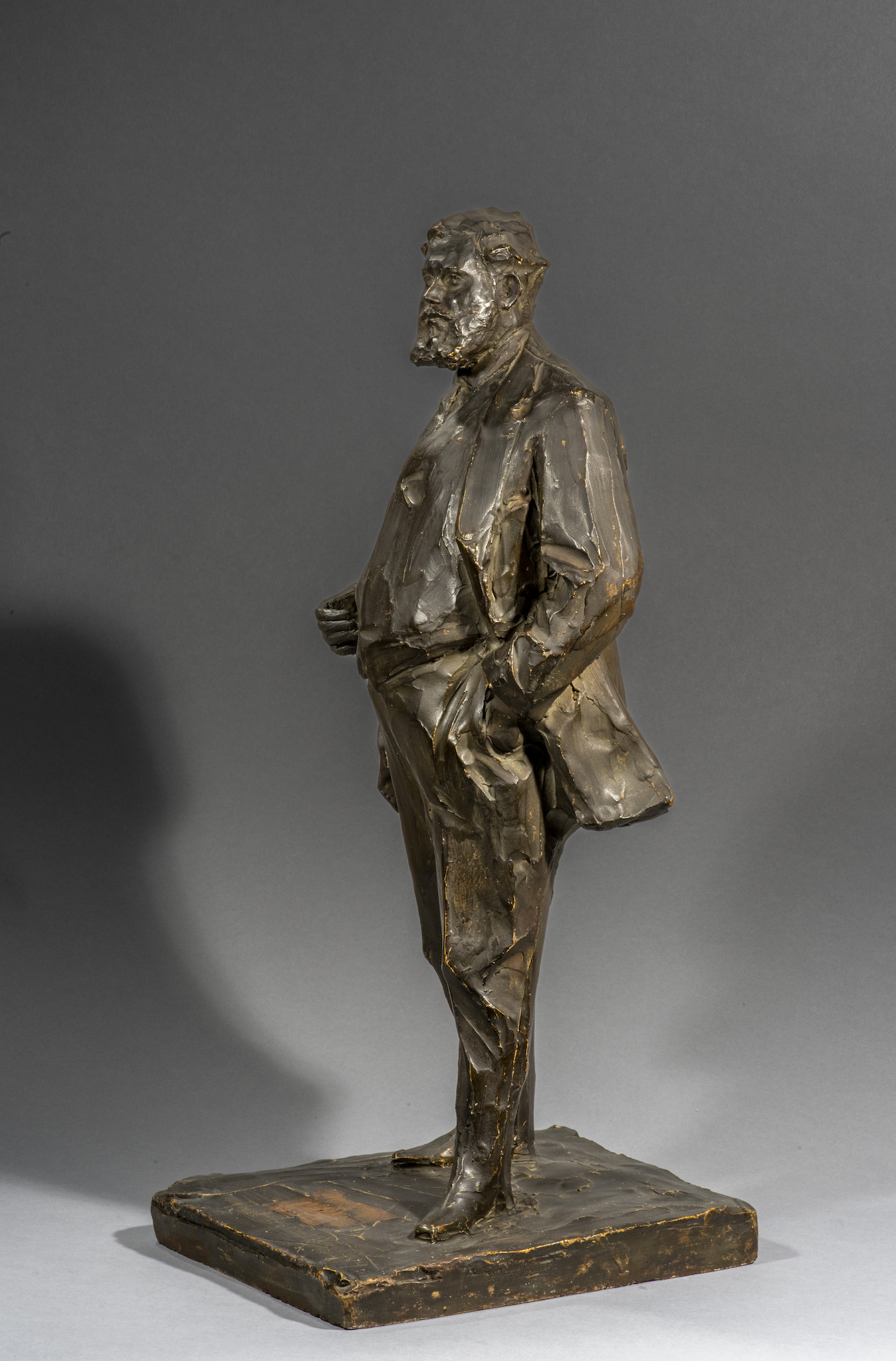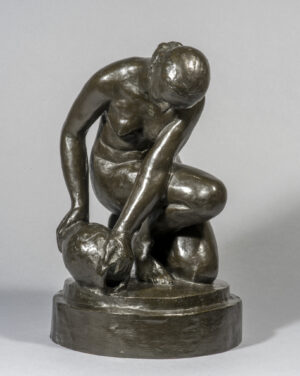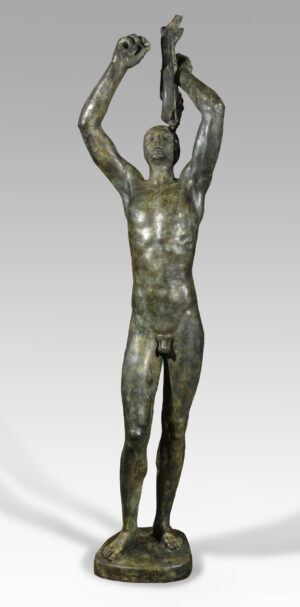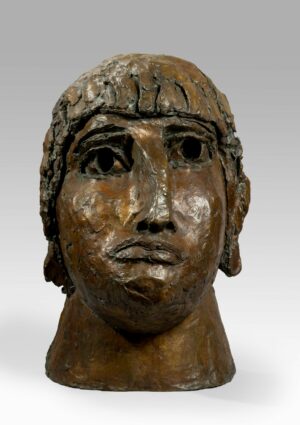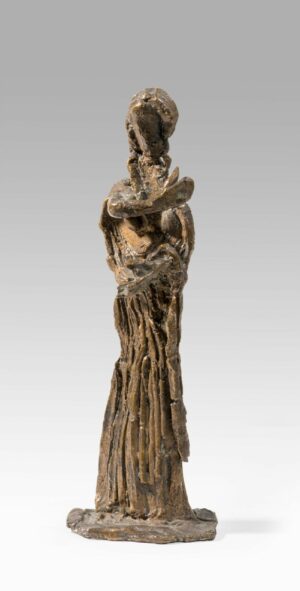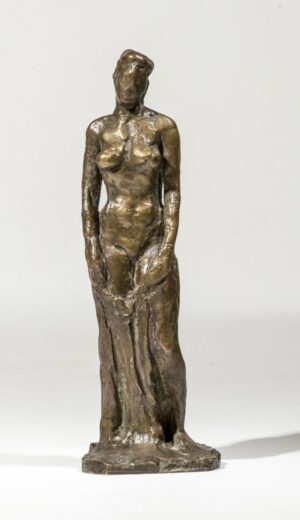Description
Nicknamed by Guillaume Apollinaire the “Michelangelo of the minuscule”,Troubetzkoy brought to perfection the ‘portrait statuette’ in original plaster or lost-wax cast by Hébrard,Valsuani, Roman BronzeWorks.
Facing the living model, his deft hand, large and strong, kneaded the clay or the plaster worked on the knife. His sketches, seemingly carried out with haste, bear the imprint of completed works, thanks to the subtle arrangement of the planes, the vibrant harmony of the masses and the latent force of life which animates them…The modelling, with its sharp edges, perfectly conveys the light which glides over the breakage of the fabrics.The leading names of the Parisian elite posed for his portrait statuette such as the Baroness Robert de Rothschild, seated with a deep neckline, next to a dog in a half laying position, watching over her, magnificent and protective, almost heraldic (Collection baron Elie de Rothschild, Paris), and also the no less famous Baron Henri de Rothschild, our sculpture’s model.Tall, somewhat overweight, good-natured, with a cigar always in his hand: his figure was a favourite with the chroniclers of the time, who regularly published his portrait.Troubetzkoy chose to feature him in a relaxed pose, with a hand in his pocket, standing solidly on both legs.
The son of James Edouard (1844-1881) and Therese de Rothschild (1847-1931), Henri de Rothschild (1872-1947) was undoubtedly one of the family’s most enterprising personalities. He made two of the most important donations and bequests to the Bibliothèque nationale in the 20th century: the first, in 1933, a very important collection of autographs (more than five thousand items), the second, in 1947, his book collection, one of the largest private libraries.
With his inquisitive mind, Henri de Rothschild was as well attracted by technical progress and medicine as by literature and theatre, each of these domains considered in parallel to his activities as a businessman, entrepreneur, publisher, collector and philanthropist.Very close to artists and great collectors, he had a real passion for the theatre, which he took on in all its forms: a successful author, he also directed several theatres from the 1910s onward (the Théâtre du Gymnase, the Moulin de la Galette). He proved how much an avant-gardist he was by having the Pigalle theatre built in 1929, one of the most modern places of its time, admired by Jean Cocteau who was quick to declare about it “What enchants me is that for the first time so much geometry is harmonised, and that a soul inhabits the ship before setting sail”. He also became one of the Théâtre du Châtelet’s main shareholders. Henri de Rothschild was probably not as great a collector as his illustrious uncles, Edmond James and Alphonse de Rothschild, nor was he a major player in the art market, despite a few high-profile purchases. He lived in his Parisian private town house at 33, rue du Faubourg Saint-Honoré, and from 1924 onwards at the Château de la Muette, as well as in his summer residence at Vaux de Cernay.
Each of his dwellings sheltered numerous objects for the most part those originating from the family tradition collected by different members of his family between 1870 and 1900. All his life, he showed a deep interest in Chardin’s paintings, which remained the thread running through his collection. Despite the sale of his dwellings, the dispersal of a large part of his collections in 1931 and 1933, and the destruction of most of his paintings of Chardin in Bath in 1942, Henri de Rothschild nevertheless remained one of the greatest patrons of the arts in the first half of the 20th century.

